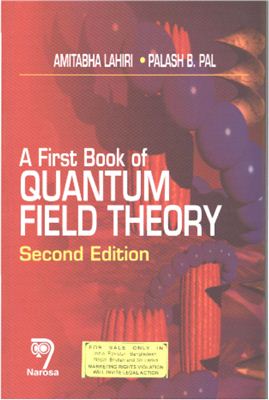Second Edition, Narosa, 2005, 380 pages
In the last few decades of the twentieth century, it has become clear that the weak and the strong electromagnetic interactions involved in quantum field theory are well described by interacting quantum fields. Although it is quite possible that, at even smaller length scales, some other kind of theory may be operative, it is clear today that quantum fields provide the appropriate framework to describe a wide class of phenomena in the energy range covered by all experiments to date. A First Book on Quantum Field Theory addresses the subject of quantum field theory. It discusses the subject as a beautiful but essentially simple piece of machinery with a range of applications. The book includes numerous exercise problems which are presented, not at the end of chapters, but in places of the text where they are likely to be most beneficial to readers.
In the last few decades of the twentieth century, it has become clear that the weak and the strong electromagnetic interactions involved in quantum field theory are well described by interacting quantum fields. Although it is quite possible that, at even smaller length scales, some other kind of theory may be operative, it is clear today that quantum fields provide the appropriate framework to describe a wide class of phenomena in the energy range covered by all experiments to date. A First Book on Quantum Field Theory addresses the subject of quantum field theory. It discusses the subject as a beautiful but essentially simple piece of machinery with a range of applications. The book includes numerous exercise problems which are presented, not at the end of chapters, but in places of the text where they are likely to be most beneficial to readers.

